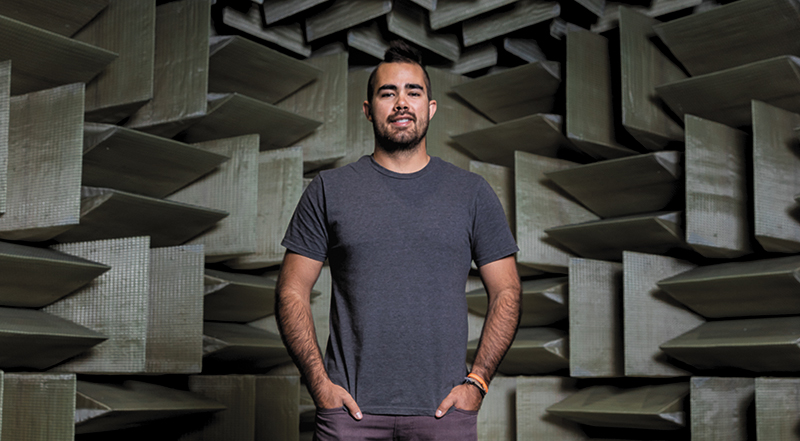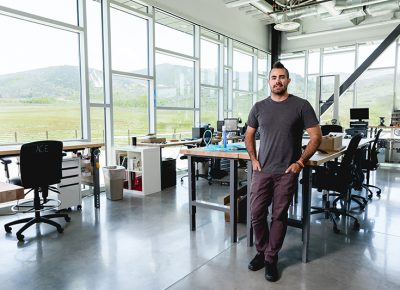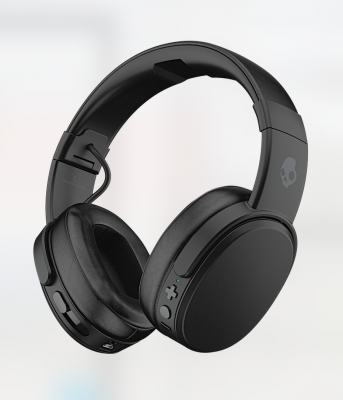
Persistence of Audio: Skullcandy’s Process
Art
Thinking of design, often what comes to mind are package designs, web design, graphic design or design that is meant to capture attention through visual aesthetic, but rarely do I look at the work around me and think about the design that goes into the way things function. When it comes to creating headphones that not only look great but also perform on a world-class level, Park City’s Skullcandy is leading the way. At the helm are two people with visions that bring Skullcandy to life: Director of Industrial Design Pete Kelley, who works on the aesthetic side of the design process, and Sr. Manager of Product Experience Sam Noertker, who works on the engineering side.

Kelley and Noertker operate in Skullcandy’s new and beautiful headquarters, located just five minutes from Park City Resort. It stands as a statement toward the company’s drive and creativity. It also houses one of only three anechoic chambers (rooms used to absorb reflections of sound) in Utah. Much like their products, the building is sleek, with a modern feel that draws the eye.
The core ideals of Skullcandy speak to their heavy consumer focus and passion to create a connection between their users and the music they listen to. “I think the core ideal is fun and authentic in regard to the love of music and the joy of music,” Noertker says. “We want to bring in the emotion of audio. What are you feeling when you experience it at a concert? We’ve brought that in through an accurate interpretation of the sound. We invented the Crusher to bring the feeling of music into headphones. We believe in it because if we do it right, it’s going to connect with people emotionally.” The vibration technology in the Crusher Headphone allows for its user to recreate that live-music feeling of bass hitting listeners’ ears by detecting when the headphones are playing music and activating the bass’s vibration. This tech is all wrapped up in a sleek and simple headphone, able to cup an ear without looking bulky. With a smooth, black finish, it all feels clean.
From the beginning, Skullcandy has been a graphics- and aesthetic-driven company. Kelley explained how Rick Alden, Skullcandy’s founder, began by applying color/graphic/lifestyle to audio products, which initially forged the company’s aesthetic. With regard to Skullcandy finding its look, Kelley says, “That path gets you started in creating your own identity, but you’re still carrying over elements that you don’t necessarily love.” Fast forward to now, where Skullcandy has industrial designers crafting their own design language that will define the company in collaboration with the Product Experience team. The growth is apparent today, as Skullcandy continues to tout a unique and ever-changing style paired with impressive sound and unique headphone tech. Kelley offers Skullcandy’s mission statement: “to be the most relevant to our core consumer by complementing their personal style with great-looking products, keep them up to date with modern features [and] wrap it up with some attitude …” he says.

There is a controlled bit of chaos to the process of creating new designs and products, as Kelley, Noertker and their respective teams have to create the best product possible through the triangle of comfort, style and durability. Bringing together engineering and industrial processes includes rapid prototyping while trying to solve opposing needs. “We need good acoustics but must keep up with the aesthetic,” Noertker says. “In acoustic headphones, you need a port for bass, and our engineers have found a way to hide that port to fit with our aesthetic. Everyone here is on the same team to create the best product available. We all want to see each other succeed.” With the aesthetic side of the process, Skullcandy generally has license to apply any color, graphic or material, and the Industrial Design department views surfaces as canvasses. “We conceptualize through sketching, prototyping and living with our designs,” says Kelley.
Skullcandy has the uncanny ability to create products that can flow seamlessly between lifestyles. Whether someone is a professional snowboarder, basketball player or musician—or works a desk job—Skullcandy’s products never seem to feel out of place. Kelley says, “We start every project by defining who will use it, where it will go and how it will be used. Answering those questions is key in creating a great product experience. An example might be a pair of buds for a snowboarder to be worn under a helmet in extremely cold weather. Your controls have to be glove-friendly. The cable better drape well in freezing temperatures, and it must be low profile in your ears.” Where a lot of companies stop when they nail their desired sound, Skullcandy brings it to another level in order to bring the world-class sound into a package that can be worn in everyday situations.
What I see from Skullcandy is an ability to work their asses off while still remaining authentic and true to the product and lifestyle they represent. Having been to Skullcandy, I understand and respect their persistence of vision while still having one hell of a time. Through their iconic style, Skullcandy remains a leader in the audio world by not only capturing the youth and action sports market but by also creating a sound that performs better than most, in a package that anyone would want to wear.